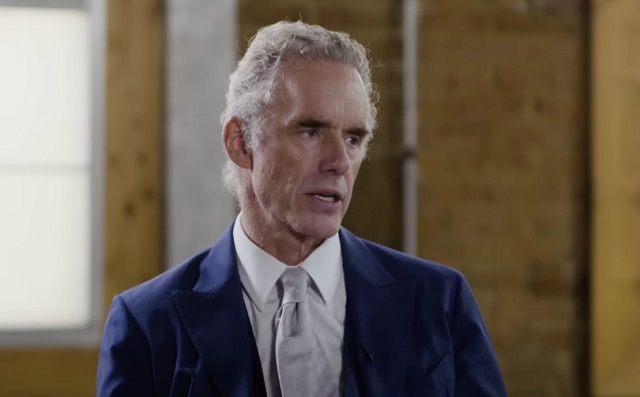Business
Federal government should tackle Canada’s productivity crisis in upcoming budget

From the Fraser Institute
In late-2014, per-person gross domestic product (GDP), a common indicator of living standards, stood at $58,162 (adjusted for inflation). By the end of 2023 it was actually slightly lower. This means Canadian living standards haven’t increased in a decade.
In a recent speech, the Bank of Canada’s senior deputy governor highlighted the risk posed by chronically sluggish productivity growth to the country’s living standards. She also noted that stalled productivity makes it harder to reduce inflation and keep it at (or close to) the Bank’s 2 per cent target.
Productivity is conventionally defined as the value of economic output per hour of work. Over time, it’s the most important determinant of overall economic growth. In a mainly market-based economy such as Canada’s, particular attention should be paid to the productivity performance of the business sector.
Unfortunately, here the news isn’t good.
Business sector productivity has flatlined in Canada, with the level of output per hour worked essentially unchanged from seven years ago. This pattern of productivity stagnation, in turn, is the principal reason why the value of economic output per person has stalled in Canada. In late-2014, per-person gross domestic product (GDP), a common indicator of living standards, stood at $58,162 (adjusted for inflation). By the end of 2023 it was actually slightly lower. This means Canadian living standards haven’t increased in a decade. That’s not a picture any Canadian citizen or policymaker should be happy about.
For many people, GDP is an abstract concept that doesn’t easily map to their lived experience. But the level and rate of growth of GDP clearly matter to the wellbeing of citizens. Academic studies confirm that worker wages are based in part on the productivity level of their employers. Put simply, the most productive businesses generally pay higher wages, salaries and benefits.
Moreover, over time individual and household incomes can only grow if the economy itself generates more output per hour of work and per person. When per-person GDP increases by 2 per cent a year (after inflation), average income doubles within 35 years. With 1 per cent annual growth in per-person GDP, it takes 70 years. At 0.5 per cent growth in per-person GDP, 139 years must pass before the average income will double. In Canada, per-person GDP has been declining outright, an alarming and unusual trend.
Addressing Canada’s productivity crisis should be job one for the federal government’s 2024 budget, which the Trudeau government will table on April 16. In the early 1980s, Canada was roughly 88 per cent as productive as the United States, measured by the value of output per hour of work across the economy. By 2022, that figure had dropped to 71 per cent, and it’s continued to decline since then.
What can be done? So far, the Trudeau government has relied on population growth fuelled by high levels of immigration to drive economic growth. That strategy has manifestly failed, as the government itself recently (if sheepishly) acknowledged by dialing back the numbers of non-permanent immigrants who will be admitted to the country.
A smarter approach is to boost investment in the things that make businesses and workers more productive—machinery, equipment, digital tools and technologies, intellectual property, up-to-date transportation and communications infrastructure, and research and development focused on bringing innovative products and ideas to market, rather than keeping them in the lab or in academic institutions. Canada’s record is poor in most of these areas, as evidenced by the fact we trail far behind the U.S. and many European countries in the level of business investment per employee.
That will need to change if we hope to up our game on productivity and lay the foundations for a more prosperous Canada.
Author:
Automotive
Canadian interest in electric vehicles falls for second year in a row: survey

From LifeSiteNews
Canadians’ disinterest in electric vehicles comes as the Trudeau government recently mandated that all new light-duty vehicles in Canada are zero emission by 2035.
Research has revealed that Canadians are increasingly unwilling to purchase an electric vehicle (EV).
According to an April 22 survey from AutoTrader, Canadians remain skeptical of Prime Minister Justin Trudeau’s electric vehicle mandate and ongoing advertisement surrounding electric vehicles, as interest in owning one dropped for a second year in a row.
“Overall, while almost half of non-EV owners are open to buying an EV for their next vehicle, interest in EVs has declined for the second year in a row,” reported Tiffany Ding, director of insights and intelligence at AutoTrader.
In 2022, at least 68 percent of Canadians were interested in buying an electric vehicle. However, by 2023, the number declined to 56 percent. So far in 2024, there is even less interest, with only 46 percent saying they were open to purchasing one.
“AutoTrader data shows a direct correlation to gas prices and EV interest, and since gas prices have normalized from their peak in 2022, EV interest has also dropped,” a summary of the survey explained.
However, Canadians did show a slight increase of interest in hybrid vehicles, with 62 percent of those looking to purchase an electric vehicle saying they would look at a gas-electric hybrid, compared with 60 percent in 2023.
The survey also questioned Canadians regarding Trudeau’s Zero Emission Vehicle (ZEV) mandate, which requires all new light-duty vehicles in Canada are zero-emission by 2035, essentially banning the sale of new gasoline/diesel-only powered cars.
The mandate comes despite warnings that it would cause massive chaos by threatening to collapse the nation’s power grids.
“Over 75 percent of respondents are aware of the federal government’s ZEV mandate, which requires all new light-duty vehicles sold in Canada to be zero-emission by 2035,” the survey found.
However, the respondents revealed that they believe it’s “unlikely that Canada will be able to meet the federal government’s ZEV target due to the current inadequate charging infrastructure or a change in political power that could revoke or amend the ZEV mandate timeline.”
Canadians’ concerns in buying an electric vehicle include limited travel range/distance, inadequate availability of charging stations, higher purchasing costs, and concerns that they do not perform well in cold weather.
Indeed, this winter, western Canadians experienced firsthand the unreliability of Trudeau’s “renewable” energy scheme as Alberta’s power grid nearly collapsed due to a failure of wind and solar power.
Trudeau’s plan has been roundly condemned by Canadians, including Alberta Premier Danielle Smith. In 2022, Smith denounced a federal mandate that will require all new cars sold after 2035 to be “zero emission” electric (EVs) vehicles and promised that Albertans will always have the choice to buy gasoline-powered cars.
Since taking office in 2015, Trudeau has continued to push a radical environmental agenda similar to the agendas being pushed the World Economic Forum’s “Great Reset” and the United Nations’ “Sustainable Development Goals.”
The reduction and eventual elimination of the use of so-called “fossil fuels” and a transition to unreliable “green” energy has also been pushed by the World Economic Forum (WEF) – the globalist group behind the socialist “Great Reset” agenda – an organization in which Trudeau and some of his cabinet are involved.
The Trudeau government’s electric vehicle plan comes despite the fact Canada has the third largest oil reserves in the world. Electric cars cost thousands more to make and buy, are largely considered unsuitable for Canada’s climate as they offer poor range and long charging times during cold winters and have batteries that take tremendous resources to make and are difficult to recycle.
Business
Ottawa’s capital gains tax hike—final nail in ‘business investment’ coffin

From the Fraser Institute
By Tegan Hill and Jake Fuss
From 2014 to 2022, inflation-adjusted total business investment (in plants, machinery, equipment and new technologies but excluding residential construction) in Canada declined by C$34 billion. During the same period, after adjusting for inflation, business investment declined by a total of $3,748 per worker
According to the recent federal budget, the Trudeau government plans to increase the inclusion rate from 50 per cent to 66.7 per cent on capital gains over $250,000 for individuals and on all capital gains realized by corporations and trusts. Unfortunately, this tax hike will be the final nail in the coffin for business investment in Canada, which likely means even harder economic times ahead.
Canada already faces a business investment crisis. From 2014 to 2022, inflation-adjusted total business investment (in plants, machinery, equipment and new technologies but excluding residential construction) in Canada declined by C$34 billion. During the same period, after adjusting for inflation, business investment declined by a total of $3,748 per worker—from $20,264 per worker in 2014 to $16,515 per worker in 2022.
While business investment has declined in Canada since 2014, in other countries, including the United States, it’s continued to grow. This isn’t a post-COVID problem—this is a Canada problem.
And Canadians should be worried. Businesses investment is key for strong economic growth and higher living standards because when businesses invest in physical and intellectual capital they equip workers with the tools and technology (e.g. machinery, computer programs, artificial intelligence) to produce more and provide higher quality goods and services, which fuels innovation and higher productivity. And as firms become more efficient and increase profits, they’re able to pay higher wages, which is why business investment remains a key factor for higher incomes and living standards.
The Trudeau government’s policies—increased regulation, particularly in the energy and mining sectors (which makes Canada a relatively unattractive place to do business), higher and uncompetitive taxes, and massive federal deficits (which imply future tax increases)—have damaged business investment.
Unsurprisingly, weak business investment has correlated with a weak economy. In the fourth quarter of 2023, real economic growth per person ($58,111) officially fell below 2014 levels ($58,162). In other words, Canadian living standards have completely stagnated. In fact, over the last decade economic growth per person has been the weakest on record since the 1930s.
Instead of helping fix the problem, the Trudeau government’s capital gains tax hike will further damage Canada’s economy by reducing the return on investment and encouraging an exodus of capital from the country. Indeed, capital gains taxes are among the most economically-damaging forms of taxation because they reduce the incentive to invest.
Once again, the Trudeau government has enacted a policy that will deter business investment, which Canada desperately needs for strong economic growth. The key takeaway for Canadians? Barring a change in policy, you can expect harder times ahead.
Authors:
-

 Automotive2 days ago
Automotive2 days agoThe EV ‘Bloodbath’ Arrives Early
-

 CBDC Central Bank Digital Currency1 day ago
CBDC Central Bank Digital Currency1 day agoA Fed-Controlled Digital Dollar Could Mean The End Of Freedom
-

 Business2 days ago
Business2 days agoHonda deal latest episode of corporate welfare in Ontario
-

 Frontier Centre for Public Policy1 day ago
Frontier Centre for Public Policy1 day agoHow much do today’s immigrants help Canada?
-

 Fraser Institute7 hours ago
Fraser Institute7 hours agoFederal government’s fiscal record—one for the history books
-

 Alberta6 hours ago
Alberta6 hours agoPrincipal at Calgary Elementary School charged with possession of child pornography
-

 Brownstone Institute1 day ago
Brownstone Institute1 day agoThe Numbers Favour Our Side
-

 Alberta6 hours ago
Alberta6 hours agoRed Deer Company fined $360,000.00 after 2022 workplace fatality









